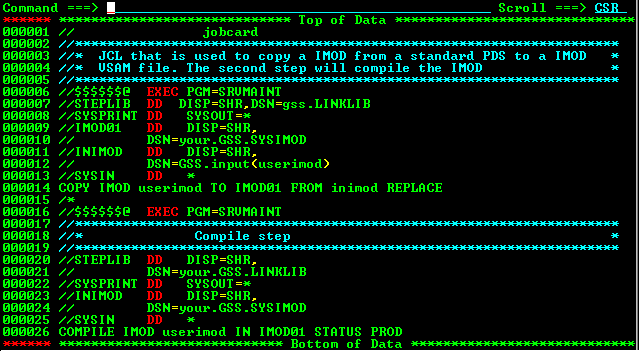z14: The Fastest Mainframe in the World
Back in July 2017 IBM introduced the fastest and most powerful mainframe of all time, the z 14. According to IBM at the time, the z14 has 10 per cent more performance per core than the z13, and there are up to 170 configurable cores, meaning up to 35 per cent more total capacity in a single footprint compared to a z13.
In fact, on July 19, 2017 we ran a terrific Blog on this topic by Alan Radding titled, New IBM Z Redefines Mainframe and Security and Cloud. You can read it at http://bit.ly/2yeuK7n.
Well, I just came across another excellent article on the z14. This one is written by Jennifer Nelson, Managing Director, R&D Database Servers and Tools at Rocket Software Inc.
In July 2017, IBM unveiled the z14, latest in its family of z System mainframes. Capable of running over 12 billion encrypted transactions per day, the fastest commercial mainframe in the world opens up new horizons in every field of computer processing. This incredible speed brings the finance industry in particular close to a key goal dating all the way back to the rise of computer-assisted banking as the z14 is the first mainframe capable of real-time reconciliation. The holy grail of banking functions, real-time reconciliation represents an exponential leap forward in encryption, security, and analytics for the worldwide financial market.
No Mo’ Slowmo
The banking industry already relies heavily on mainframes to handle its computing needs. This is because only Big Iron has the processing muscle to take on the millions of transactions, security checks, reconciliations, and protocols each bank must do per day. With the rise of data analytics, that number of operations jumps up to the billions as banks not only perform but also collate, organize, and analyze every new transaction to check for actionable trends in the sensitive fiscal market. Until now, mainframes have been able to perform all of these functions with a delay that might seem slight to laymen, but which is in fact long enough to create drag on transactions, and often long enough for fraudsters to fool the system.
Real-Time for Real
Real-time reconciliation means a transaction is logged, checked for inconsistencies, and confirmed instantaneously upon being performed by the user. For example, a check can clear in minutes rather than days; or a transfer of funds of any size can be scanned for inconsistencies, flagged, and resolved in moments, increasing both the speed and accuracy of sensitive interactions between banks and their customers as well as between fiscal organizations. As fraudsters rely on delays between transaction and reconciliation to get away with funds or fraudulent purchases, eliminating this delay with instant processing drastically reduces the chance of perpetrating a successful scam. The faster the mainframe, the more problematic transactions it can flag at a time.
Full Encryption
Of course fraud prevention is just one of the ways a mainframe as fast as the z14 increases security. Black Hat online criminals are constantly seeking to breach banking systems, to steal and decrypt the precious financial data inside. A system’s ability to foil this sort of intrusion is limited by how heavily each file is encrypted, and the encryption process traditionally takes time. But a lightning-fast mainframe can completely encrypt all the files it works within the time it takes a weaker system to put up some basic safeguards. Just as more powerful mainframes are better at spotting intrusions, they also make those intrusions less desirable as the data stolen will take more time and effort to decrypt. Of course the most dedicated black hats will take the time to encrypt such data, but this heavy security should pose a strong deterrent to all but these elite and devoted criminals.
Data Virtualization Replaces ETL
Faster mainframes also provide the added bonus of data virtualization, replacing the slower extract, transform, load (ETL) operation wherein data that needs to be processed is copied from its original home system to the processing unit. Data virtualization creates a virtual image of the data in the processing system, gaining the redundancy of a copy without the added risk of theft and slowdown inherent in an extracted copy. A powerful mainframe like the z14 can perform data virtualization in real time, letting ETL processes handle data retention, at once trimming and strengthening computing within the banking industry.
Better, Faster, Smarter
Rather than perform reconciliation at the end of each banking day, fiduciary organizations using a network of powerful mainframes can reconcile all data as soon as it appears in the system, freeing up considerable processing power for more efficient and useful operations like security sweeps, encryption and data analysis. As the banking industry adopts new ideas such as blockchain, more powerful mainframes will be able to seamlessly integrate added protocols without losing power or speed, guaranteeing a more efficient and secure fiscal market for years to come.
To read this article in its original form, go to http://bit.ly/2xyi7qt.
In fact, on July 19, 2017 we ran a terrific Blog on this topic by Alan Radding titled, New IBM Z Redefines Mainframe and Security and Cloud. You can read it at http://bit.ly/2yeuK7n.
Well, I just came across another excellent article on the z14. This one is written by Jennifer Nelson, Managing Director, R&D Database Servers and Tools at Rocket Software Inc.
In July 2017, IBM unveiled the z14, latest in its family of z System mainframes. Capable of running over 12 billion encrypted transactions per day, the fastest commercial mainframe in the world opens up new horizons in every field of computer processing. This incredible speed brings the finance industry in particular close to a key goal dating all the way back to the rise of computer-assisted banking as the z14 is the first mainframe capable of real-time reconciliation. The holy grail of banking functions, real-time reconciliation represents an exponential leap forward in encryption, security, and analytics for the worldwide financial market.
No Mo’ Slowmo
The banking industry already relies heavily on mainframes to handle its computing needs. This is because only Big Iron has the processing muscle to take on the millions of transactions, security checks, reconciliations, and protocols each bank must do per day. With the rise of data analytics, that number of operations jumps up to the billions as banks not only perform but also collate, organize, and analyze every new transaction to check for actionable trends in the sensitive fiscal market. Until now, mainframes have been able to perform all of these functions with a delay that might seem slight to laymen, but which is in fact long enough to create drag on transactions, and often long enough for fraudsters to fool the system.
Real-Time for Real
Real-time reconciliation means a transaction is logged, checked for inconsistencies, and confirmed instantaneously upon being performed by the user. For example, a check can clear in minutes rather than days; or a transfer of funds of any size can be scanned for inconsistencies, flagged, and resolved in moments, increasing both the speed and accuracy of sensitive interactions between banks and their customers as well as between fiscal organizations. As fraudsters rely on delays between transaction and reconciliation to get away with funds or fraudulent purchases, eliminating this delay with instant processing drastically reduces the chance of perpetrating a successful scam. The faster the mainframe, the more problematic transactions it can flag at a time.
Full Encryption
Of course fraud prevention is just one of the ways a mainframe as fast as the z14 increases security. Black Hat online criminals are constantly seeking to breach banking systems, to steal and decrypt the precious financial data inside. A system’s ability to foil this sort of intrusion is limited by how heavily each file is encrypted, and the encryption process traditionally takes time. But a lightning-fast mainframe can completely encrypt all the files it works within the time it takes a weaker system to put up some basic safeguards. Just as more powerful mainframes are better at spotting intrusions, they also make those intrusions less desirable as the data stolen will take more time and effort to decrypt. Of course the most dedicated black hats will take the time to encrypt such data, but this heavy security should pose a strong deterrent to all but these elite and devoted criminals.
Data Virtualization Replaces ETL
Faster mainframes also provide the added bonus of data virtualization, replacing the slower extract, transform, load (ETL) operation wherein data that needs to be processed is copied from its original home system to the processing unit. Data virtualization creates a virtual image of the data in the processing system, gaining the redundancy of a copy without the added risk of theft and slowdown inherent in an extracted copy. A powerful mainframe like the z14 can perform data virtualization in real time, letting ETL processes handle data retention, at once trimming and strengthening computing within the banking industry.
Better, Faster, Smarter
Rather than perform reconciliation at the end of each banking day, fiduciary organizations using a network of powerful mainframes can reconcile all data as soon as it appears in the system, freeing up considerable processing power for more efficient and useful operations like security sweeps, encryption and data analysis. As the banking industry adopts new ideas such as blockchain, more powerful mainframes will be able to seamlessly integrate added protocols without losing power or speed, guaranteeing a more efficient and secure fiscal market for years to come.
To read this article in its original form, go to http://bit.ly/2xyi7qt.




